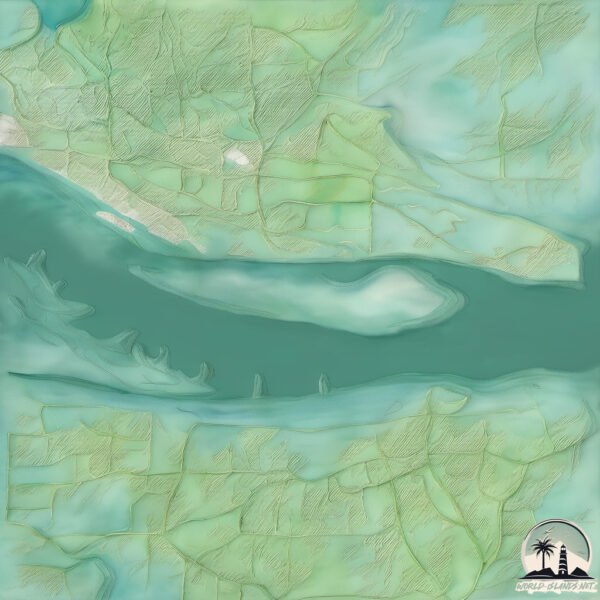Welcome to Reed , a Temperate island in the North Pacific Ocean, part of the majestic Pacific Ocean. This guide offers a comprehensive overview of what makes Reed unique – from its geography and climate to its population, infrastructure, and beyond. Dive into the details:
Geography and size of Reed
Size: 2.052 km²Coastline: 8.6 kmOcean: Pacific OceanSea: North Pacific OceanContinent: North America
Reed is a Small Island spanning 2.1 km² with a coastline of 8.6 km.
Archipel: –
Tectonic Plate: North America – Covers North America and parts of the Atlantic and Arctic Oceans, characterized by diverse geological features and varying levels of seismic activity.
The geographic heart of the island is pinpointed at these coordinates:
Climate and weather of Reed
Climate Zone: TemperateClimate Details: Warm-Summer Mediterranean ClimateTemperature: Warm Summer
Climate Characteristics: Characterized by warm, dry summers and mild, wet winters, typical of coastal areas with abundant sunshine Rain is more common in the winter months, maintaining a moderate climate.
Topography and nature of Reed
Timezone: UTC-08:00Timezone places: America/Los_AngelesMax. Elevation: 9 m Mean Elevation: 7 mVegetation: Deciduous Broadleaf ForestTree Coverage: 94%
The mean elevation is 7 m. The highest elevation on the island reaches approximately 9 meters above sea level. The island is characterized by Plains: Flat, low-lying lands characterized by a maximum elevation of up to 200 meters. On islands, plains are typically coastal lowlands or central flat areas.
Dominating Vegetation: Deciduous Broadleaf Forest
Vegetation: 5 vegetation zones – Highly Diverse Island
Infrastructure and Travelling to Reed
Does the island have a public airport? no .
Does the island have a major port? no .
The mean population of Reed is 0 per km². Reed is Uninhabited. The island belongs to United States of America .
Continuing your journey, Puget is the next notable island, situated merely km away.
The Falls at Reed's Island
An unbelievable setting for this contemporary, three-bedroom vacation rental home in Hilo, Hawaii. There's a huge waterfall in the ...
The Falls at Reed's Island
An unbelievable setting for this contemporary, three-bedroom vacation ...
An unbelievable setting for this contemporary, three-bedroom vacation rental home in Hilo, Hawaii. There's a huge waterfall in the ...
A look around a reed island on lake Titicaca
A look around a reed island on lake Titicaca.
A look around a reed island on lake Titicaca.
Lake Titicaca Reed Island Tour (PeruHop)
Lake Titicaca Reed Island Tour (PeruHop) | Due to PeruHop's convenient ...
Lake Titicaca Reed Island Tour (PeruHop) | Due to PeruHop's convenient tour-selection feature while deciding your trip through ...
United States of America is classified as Developed region: G7: Group of Seven – Major advanced economies, including Canada, France, Germany, Italy, Japan, the United Kingdom, and the United States. The level of income is High income: OECD.
News – Latest Updates and Headlines from Reed
Stay informed with the most recent news and important headlines from Reed. Here’s a roundup of the latest developments.
Loading...
Please note: The data used here has been primarily extracted from satellite readings. Deviations from exact values may occur, particularly regarding the height of elevations and population density. Land area and coastline measurements refer to average values at mean high tide.

